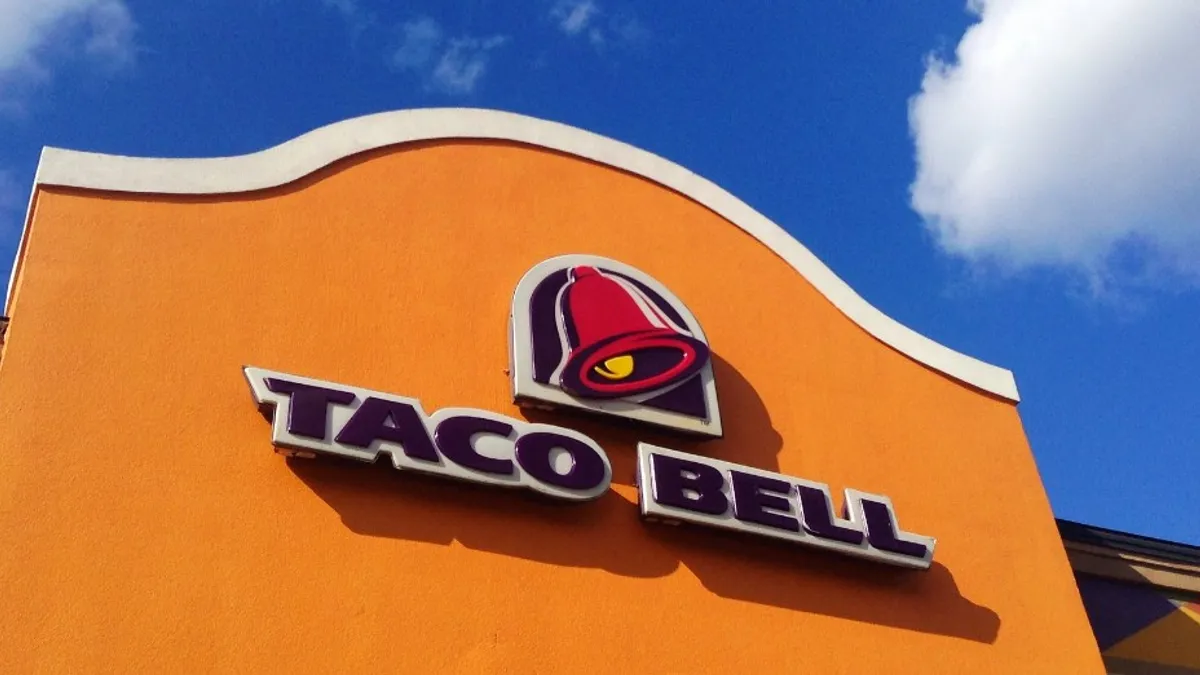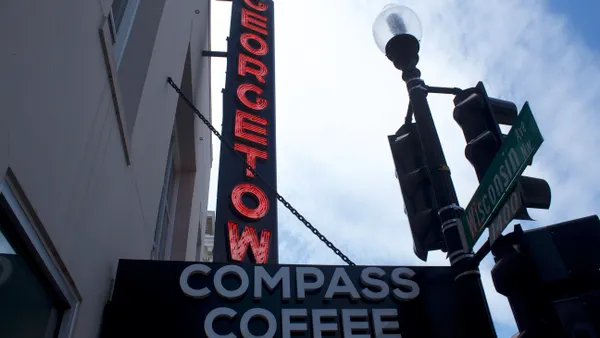Dive Brief:
- Taco Bell's total system sales grew 5% in Q3 2020, driven by same-store sales growth and net new unit growth of 3%, respectively, according to Yum Brand's investor call Thursday. The Mexican QSR now accounts for 35% of divisional operating profit, and it saw a 400-basis point increase in restaurant margins.
- Yum CEO David Gibbs said on the call that Q3 drive-thru demand at the chain "skyrocketed" and that Taco Bell served over 30 million more cars at the channel year-over-year, and that drive-thru is also 17 seconds faster.
- Taco Bell's strong drive-thru performance for the quarter underscores Yum's savvy in developing a new Go Mobile store format for the chain that features a double drive-thru, with one lane distributing mobile pickup orders while the other takes traditional orders placed at the window. Two Go Mobile restaurants will open in Q1 2021.
Dive Insight:
Taco Bell's success at the drive-thru and its plans to digitize and grow the channel next year will likely both buoy and see further gains from the chain's investments in its digital loyalty program, which launched in July. That rollout came five years after the chain's first-ever loyalty program, and highlights the QSR industry's pivot to meet diners online and streamline their omnichannel networks as pandemic restrictions keep many dining rooms closed or at limited capacity. Taco Bell continues to open temporarily closed stores, and ended Q3 with about 80 store closures, Gibbs said.
Go Mobile locations will leverage the rewards program by giving mobile diners more loyalty points if they select Taco Bell's selected path to pickup, whether that be the drive-thru or curbside channels.
The chain has also expanded its off-premise reach by adding more third-party delivery partners. Earlier this month, Taco Bell teamed with DoorDash to provide delivery at more than 5,500 restaurants, or about 75% of its U.S. footprint. That addition comes amid a lawsuit between Taco Bell and Grubhub, which was once the chain's exclusive delivery partner before Yum accused the platform of violating the terms of their original agreement. Yum has since divested its stake in Grubhub for $206 million.
Taco Bell's margin improvement was also driven by limited hours and menu simplification, Gibbs said, but the chain also saw gains after doubling their party size meals to appeal to demand for family meal solutions. Taco Bell hasn't stopped menu innovation, however, and Gibbs pointed to the success of novelty items like the $2.99 Grilled Cheese Burrito, $5 Grilled Cheese Burrito Box and the $1 Nacho Crunch Double Stacked Taco that debuted this summer as fuel for diner interest.
"Taco Bell, you know, always has their finger on the pulse of the consumer. That's what makes the brand great, the way they connect with consumers," Gibbs said. "We're really in an environment where food is going from something as fuel to being something a little bit more like entertainment. This is an environment where people are now comfortable with how things are going to be for a while and they're looking for a little bit more excitement."












